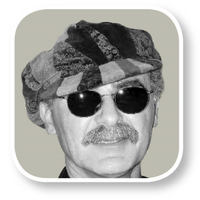






Playing Card Nicknames: Kingsby Michael Wiesenberg | Published: Apr 01, 2015 |
|
|

Michael Wiesenberg
The usual rank of the king is 13th in the hierarchy, starting with ace, that is, one higher than the queen. In decks in which the knight is a rank, the king is 14th. In tarot decks, for example, the knight ranks between the jack and queen. Poker and bridge decks, that is, the most common playing cards, have no knight.
Kings as starting cards in hold’em are sometimes referred to as ace magnets, sardonically named because pocket kings are involved in (too) many bad beat stories about confrontations with aces.
Any nonspecific king can be called a cowboy, kowboy, or K-boy. A king can be called a monarch. You’ll also hear King Kong.
Sergeant from K Company is a fanciful name for a king. Another fanciful name applies to the hand consisting of three kings or the three kings themselves: three wise men, from the three who are supposed to have followed the Biblical Star of Bethlehem. (They’re immortalized in a carol that begins “We three kings of Orient are …”)
Specific Kings
King of Clubs
In the English deck, the figure faces forward, tilted to the left. He holds a sword in his left hand.
King of clubs, English deck
In the French deck, the figure faces forward, tilted very slightly to the right, holding in his left hand a scepter with something that looks like a shield attached below it. He is known in the French deck as Alexandre, the French spelling of Alexander, which probably comes from Alexander the Great.
King of clubs, French deck
King of Diamonds
In the English deck, the figure appears in profile, facing to the left, with one hand sticking up in front of him, seemingly coming out of his shoulder. An axe appears behind his head. Often known as the one-eyed king, he is one of the three face cards known as the one-eyes.
King of diamonds, English deck
In the French deck, the figure appears in profile, facing to the right, with no distinguishing attribute, and no visible hands. He is known in the French deck as César, which is the French representation of Caesar, and which likely came from Julius Caesar.
King of diamonds, French deck
King of Hearts
In the English deck, the figure faces forward, tilted very slightly to the left, and holds a sword. He appears to be sticking the sword into his head, whence originates his sobriquet the suicide king. Unlike the other kings, he does not have a mustache (and thus is sometimes known as the king without a mustache).
King of hearts, English deck
In the French deck, the figure faces forward, tilted very slightly to the right, and holds a sword. The face has a full mustache. He is known in the French deck as Charles, which may come from Charlemagne, or King Charles VII of France.
King of hearts, French deck
King of Spades
In the English deck, the figure faces forward, tilted to the right. He holds a sword in his left hand.
King of spades, English deck
In the French deck, the figure faces forward, tilted very slightly to the left, and holds a scepter, while a harp (King David’s instrument) appears below his scepter. He is known in the French deck as David, which probably comes from the Biblical King David.
King of spades, French deck
The Official Dictionary of Poker, from which comes much of this information, will soon be available as a Kindle book on Amazon.
Next: ace nicknames and the joker ♠
Michael Wiesenberg has been a columnist for Card Player since 1988. He has written or edited many books about poker, and has also written extensively about computers, computer languages, and puzzles. Wiesenberg constructs crosswords for newspapers, magazines, books, and smartphone apps. Send commendations, condemnations, and commands to
queuecp@gmail.com.
Features
The Inside Straight
Strategies & Analysis
Commentaries & Personalities